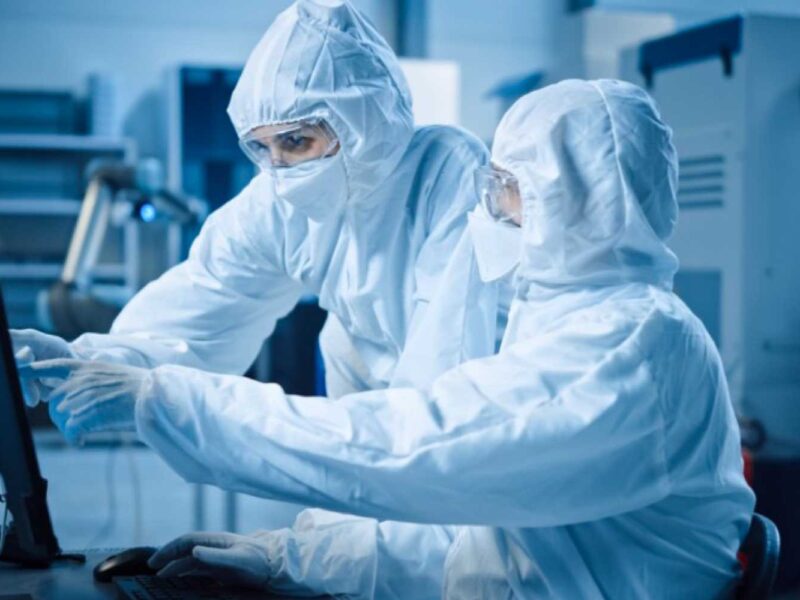Reading time: 2,5 minutes
You have probably seen them before on TV — those white, lighted rooms where people are working, dressed in disposable overalls. It looks like something secret is being created, but that is often not the case at all. These rooms are called clean rooms. In this blog, I will briefly explain what a clean room is and what you must pay attention to when selecting a dosing system.
What is a clean room?
According to the ISO classification, a clean room is a “room in which the concentration of particles in the air is controlled and classified and which has been designed and constructed and is used in such a way to control the supply, generation and deposit of particles within the room.”
Most clean rooms are used for the manufacture of products such as electronics, pharmaceutical products and medical equipment. In these environments, therefore, high requirements are imposed on the materials as well as on the machines that are used there.
What requirements are imposed on a clean room?
There are nine ISO classes, with ISO-1 being the highest. A specific package of regulations applies to each of these nine classes. For example, the production of medical products, such as injections, hoses and gloves, requires a production environment where only those materials that satisfy the requirements are used. This also applies to environments where products are made for the food industry. Some examples of such products are packaging, films and PET preforms. In addition, these rooms are provided with climate and/or air-control systems that have special filters.
High-quality equipment for a clean room
As already explained, high requirements are set for clean rooms. These requirements also apply to the systems that are used in clean rooms. For systems that dose masterbatch, powder, regrind and liquids, this means that these must be hygienic and able to be cleaned properly. It is also important that the dosing systems are highly accurate and the software is able to control the quality with 100% traceability, even with an ultra-low shot weight.
The dosing system we advise, therefore, is the MDS Balance clean room. This special gravimetric feeder is nearly fully manufactured from stainless steel and is completely oil-free. It has food-quality seals that are specified for use in most medical and clean room applications. The associated controller is also produced from stainless steel and has no external ventilation.
It is clear that working in a clean room always requires a balance between working with the right materials and equipment and compliance with the applicable laws and regulations. Because of this blog, you now know in a nutshell what you must pay attention to when making choices for working in a clean room. Should you be interested in learning more about the application of dosing systems in your (future) clean room environment, feel free to contact one of our advisers.

